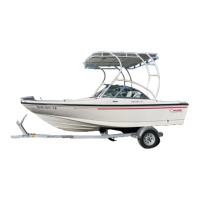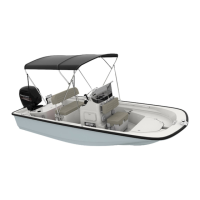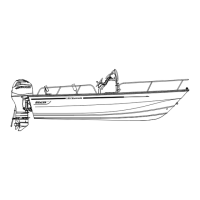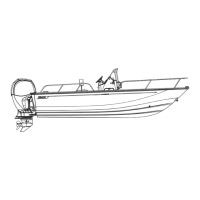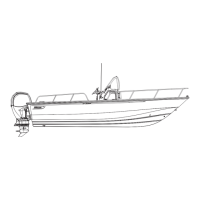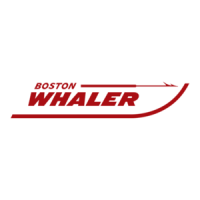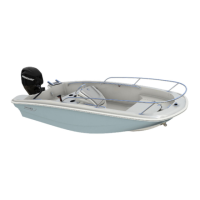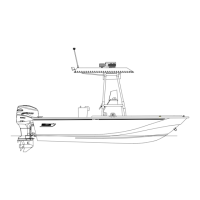3-6
170 Montauk
Section 3 • Systems & Components Overview & Operation
Periodically inspect for the presence of water in the
fuel tank. If any is found, all water must be removed
and the tank completely dried before relling the tank
with any fuel containing ethanol.
Maintenance
Storage
Long periods of storage and/or non-use, common to
boats, create unique problems. When preparing to
store a boat for extended periods, of two months or
more, it is best to completely remove all fuel from
the tank. If it is not possible to remove the fuel,
maintaining a full tank of fuel with a fuel stabilizer
added to provide fuel stability and corrosion
protection is recommended.
• Add fuel stabilizer/treatment at manufacturers
recommended dosage.
• Run engine(s) for 10 minutes.
• Shut OFF fuel valve. Allow engine to run until
it stops.
• Top o fuel tank, leaving space for expansion.
DO NOT ll to point of overow.
• DO NOT cap the tank vent.
A partially full tank is not recommended because the
void space above the fuel allows air movement that
can bring in water through condensation as the air
Example of Phase Separation
Fig. 3.6.1
1
2
3
4
1
2
34
CONDENSATION
UPPER PHASE
(WATER+FUEL+ETHANOL)
LOWER PHASE (WATER+ETHANOL)
FUEL INLET TO ENGINE
Humidity and condensation create water in your fuel
tank which can adversely eect the ethanol blended
fuel. A condition called phase separation can occur
if water is drawn into the fuel beyond the saturation
point. The presence of water in the fuel beyond the
saturation level will cause most of the ethanol in the
fuel to separate from the bulk fuel and drop to the
bottom of the tank, signicantly reducing the level of
ethanol in the fuel mixture in the upper level (phase).
If the lower level (phase), consisting of water and
ethanol, is deep enough to reach the fuel inlet, it
could be pumped directly to the engine(s) and cause
signicant problems. Engine problems can also result
from the reduced ethanol/fuel mixture left in the
upper phase of the tank.
Additives
There is no practical additive known that can prevent
Fuel Filters
Mercury already provides the appropriate level of
ltration to protect the engine from debris. The
addition of another in-line lter to the system may
create a possible ow restriction that can starve the
engine(s) of fuel. It is advisable to carry extra on-
engine lters in case lter plugging from debris in
the fuel tank becomes a problem during boating.
Your Boston Whaler dealer will have recommendations
regarding lters that meet Mercury’s specications.
Filling The Tank
It is best to maintain a full tank of fuel when the
engine is not in use. This will limit exposure of the
ethanol in the fuel to humidity and condensation.
Phase Separation
The use of fuels containing ethanol higher than
10 percent (E-10) can damage your engine and/
or fuel system and will void the warranty.
!
CAUTION
E85 FUELS COULD SERIOUSLY DAMAGE
YOUR ENGINES AND MUST NEVER BE USED.
or correct phase separation. The only solution is to
keep water from accumulating in the tank.
If phase separation does occur, your only remedy is
to drain the fuel, clean and dry the tank completely
and rell with a fresh, dry load of fuel.
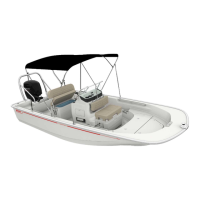
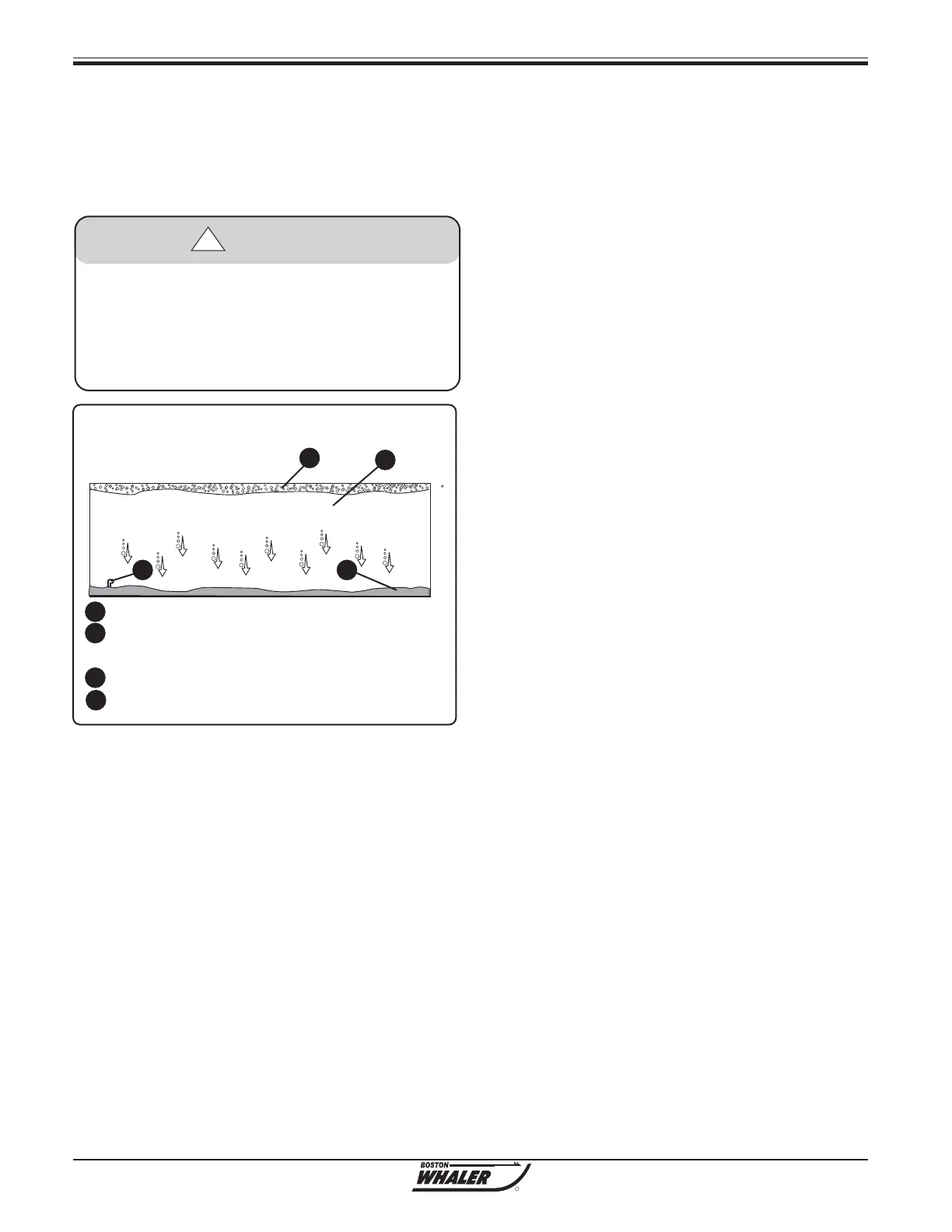